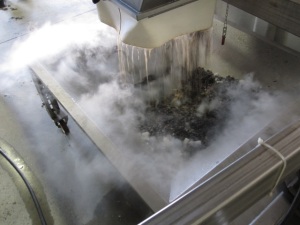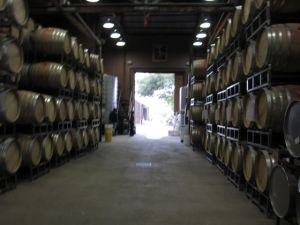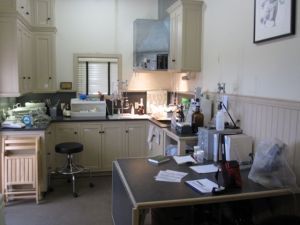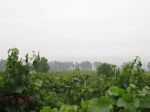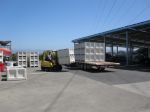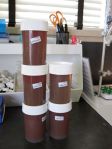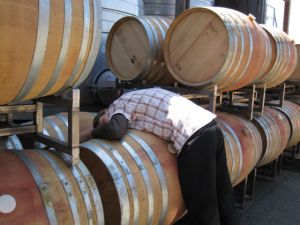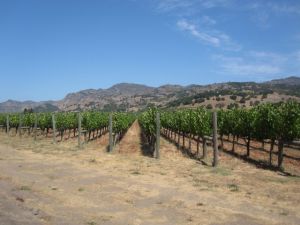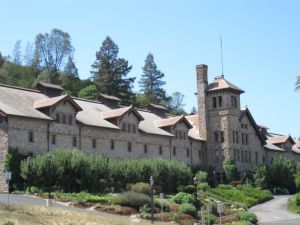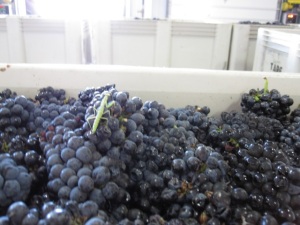
Its hard to say why these grapes are of lesser quality, as their sugars and acid match our targets. Yet, these grapes come from a warmer region, ripen faster and are cropped at higher tonnage per acre, which all combine to reduce the intensity of flavor in the resultant wine... something that is hard to imagine when plucking one from the bin and popping it into your mouth. They taste of grapes after all, not black cherries, wet wood, cocoa or any other descriptor you would likely get in a pinot noir wine. The winemakers art it to picture this future manifestation and make his decisions based on this potential.
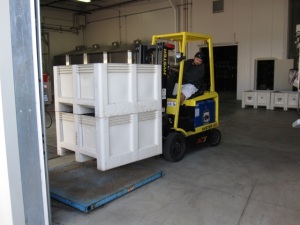
But beings grapes determined to be destined for lesser futures, our operative was to process these grapes quickly. Its stunning how automated much of this process can be. After weighing the bins, forklifts lift bins into a tray, which tips the grapes into a hopper. An auger feeds the grapes into the de-stemmer/crusher, which dumps berry skins and juice into an auger fed pump, which leads to a fermentation tank. While doing this, small amounts of sulfur dioxide solution are added (to prevent bacterial spoilage; see earlier post), as well as dry ice, which keeps the must temperatures down to slow fermentation. The twenty or so bins of grapes were processed rather quickly, leaving only clean-up.
A video of the whole process will follow.
